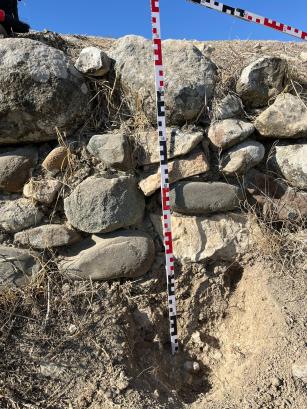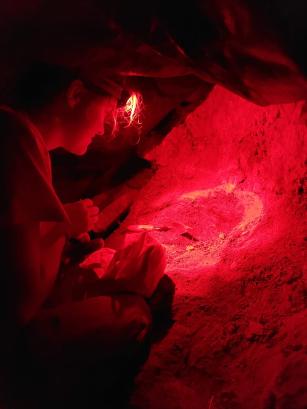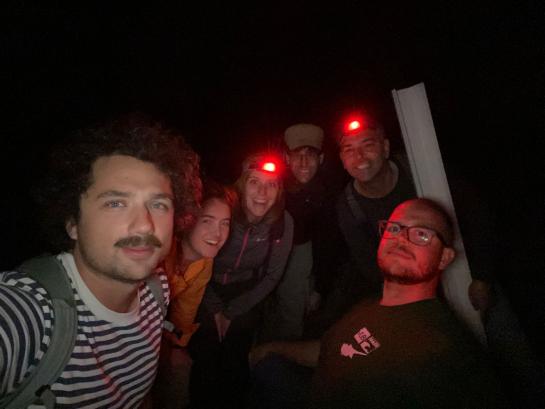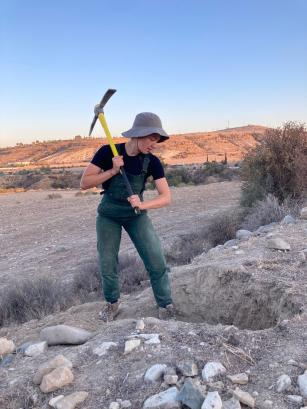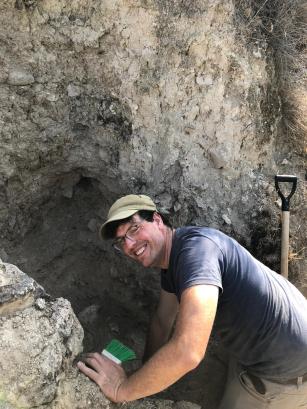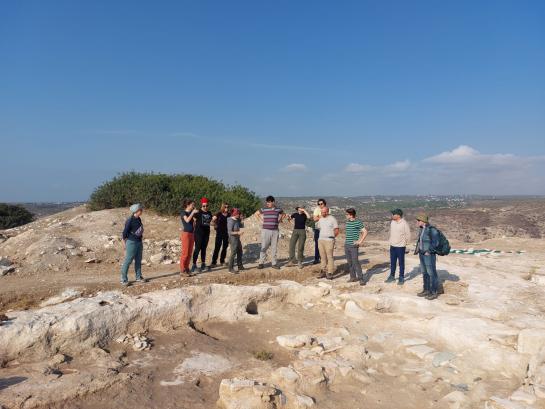
The AGMC Terrace group recently participated in another fieldwork campaign in the foothills of the Troodos mountains in Cyprus (Pyrga, Erimi, and Politiko areas) at the beginning of November 2024. The expedition brought together geographers and archaeologists from the VUB, KU Leuven, University of Geneva, University of Siena, and the University of North Carolina at Charlotte. A rich collaborative environment allowed a broader discussion on the origins and necessities of ancient Mediterranean societies when modifying the landscape.
Among the campaign’s highlights was the discovery of a buried clayey soil layer in the terraces of the Bronze Age archaeological site of Politiko, located in the northern Troodos region. This clayey layer is potentially the ancient surface where the inhabitants of Politiko first practiced soil management before constructing terraces. The combination of sediment coring with profiling OSL allowed us to distinguish between the anthropogenic horizons related to agriculture and the above-mentioned clayey layer formed probably in the Late Pleistocene. While these hypotheses are still under investigation, they hint at early agricultural ingenuity shaping the mountainous landscape in Cyprus.
Future collaborative work will further illuminate sedimentation and erosion rates in terraced landscapes and uncover a fascinating chapter of Mediterranean agricultural history. Additionally, rich information related to ancient water management systems, such as dams and dammed springs, is being integrated into studying these terrace systems. In Cyprus, the Terrace team is intensely interested in how, apart from the terraces themselves, various other structures were constructed to control water flow through the landscape.
The campaign integrated a wide range of disciplines, reflecting the diverse expertise within AMGC and KU Leuven, from geophysical prospection to detailed soil descriptions. The campaign and the larger FWO-funded Terrace project (G027423N) propose a novel interdisciplinary and multiscale perspective on the role of agricultural terraces in ancient and modern socio-ecosystems. The multi-proxy approach is key to better understanding the history of agricultural terraces. Phytolith analysis (Mónica Alonso), OSL dating (Soetkin Vervust), Water management practices (Ella Egberts), Mediterranean archaeology (Ralf Vandam), Soil micromorphology (Yannick Devos), Lipids and sedaDNA analysis (Axel Cerón), and Geomorphic responses to terrace construction (Matthias Vanmaercke and Andrei Kedich). Thanks to the dedicated field allies, including Lore de Leersnyder, Jolien Cerpentier, Dries Vergouwen, and Polte de Weirdt. Furthermore, we are grateful to have collaborated with Erimi and Politiko's teams. This research was possible through the support of the Cypriot Geological Survey Department and the Department of Antiquities
